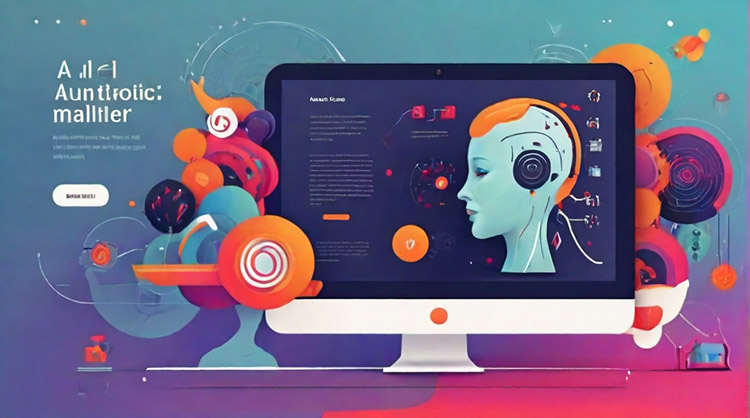AI For Website Design
In the fast-paced world of technology, the integration of Artificial Intelligence (AI) has brought about transformative changes in various industries. One such domain that has witnessed a significant impact is website design. AI is not just a buzzword; it is a powerful tool that is revolutionizing the way websites are created and optimized. In this blog post, we will explore the role of AI in website design and how it is reshaping the digital landscape.
Personalized User Experience:
AI algorithms analyze user behavior, preferences, and interactions to create a personalized user experience. From recommending products to customizing content, AI tailors the website interface based on individual user data. This not only enhances user satisfaction but also increases the likelihood of conversions.
Responsive Design Optimization:
With the proliferation of various devices and screen sizes, creating a responsive website is crucial. AI assists in optimizing the design for different platforms by automatically adjusting layouts, images, and content. This ensures a seamless and consistent user experience across desktops, tablets, and smartphones.
Automated Content Generation:
Content is a fundamental aspect of website design, and AI is making significant strides in automating content creation. Natural Language Processing (NLP) algorithms can generate human-like text, enabling designers to quickly produce engaging and relevant content. This not only saves time but also maintains consistency throughout the website.
Predictive Design Trends:
AI analyzes vast amounts of data to identify emerging design trends. By understanding the latest aesthetics and user preferences, AI helps designers stay ahead of the curve. This predictive capability ensures that websites remain visually appealing and up-to-date, contributing to a modern and competitive online presence.
Smart Image Recognition:
Image recognition powered by AI enables websites to automatically tag and categorize images. This enhances search engine optimization (SEO) and improves the accessibility of content. Moreover, AI-driven image compression techniques ensure faster loading times without compromising on image quality.
Efficient Workflow with Chatbots:
Integrating AI-powered chatbots streamlines communication and enhances user engagement. These virtual assistants can guide users through the website, answer queries, and provide assistance in real-time. By automating routine tasks, chatbots free up human resources to focus on more complex aspects of website design and maintenance.
User Behavior Analytics:
AI tools gather and analyze data on user behavior, helping designers make data-driven decisions. By understanding how users navigate through a website, which pages they visit most frequently, and where they drop off, designers can refine and optimize the user experience for better performance.
Conclusion
In conclusion, the integration of AI in website design is not just a trend; it is a fundamental shift that is reshaping the way we approach digital presence. From personalized user experiences to automated content generation and predictive design trends, AI is empowering designers to create websites that are not only visually appealing but also highly functional and user-centric. As technology continues to advance, the collaboration between human creativity and AI innovation holds the key to unlocking new possibilities in the ever-evolving world of website design.




